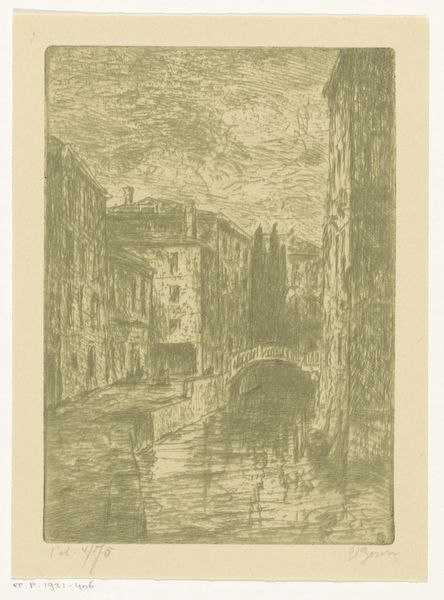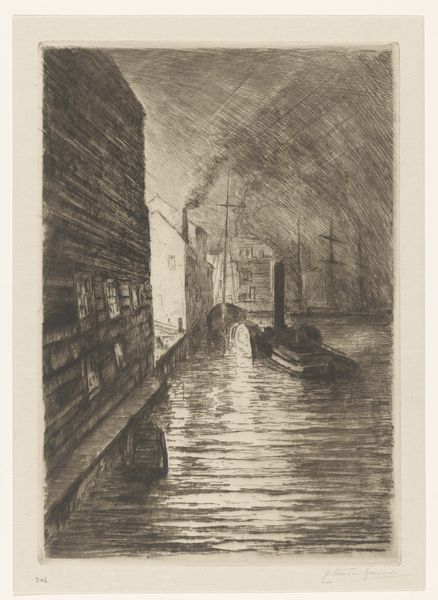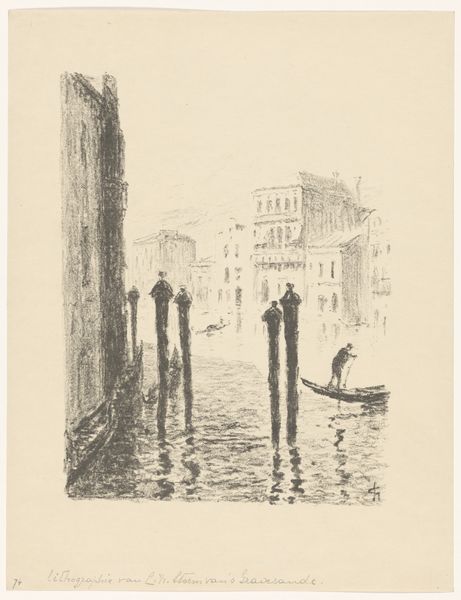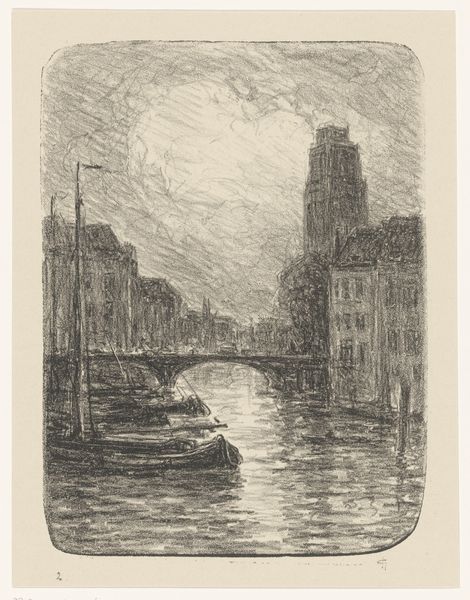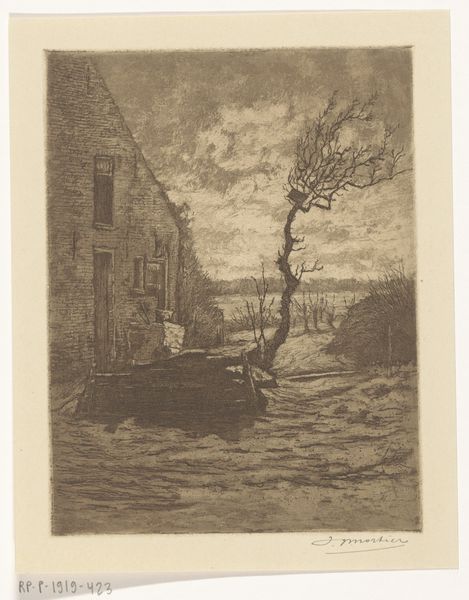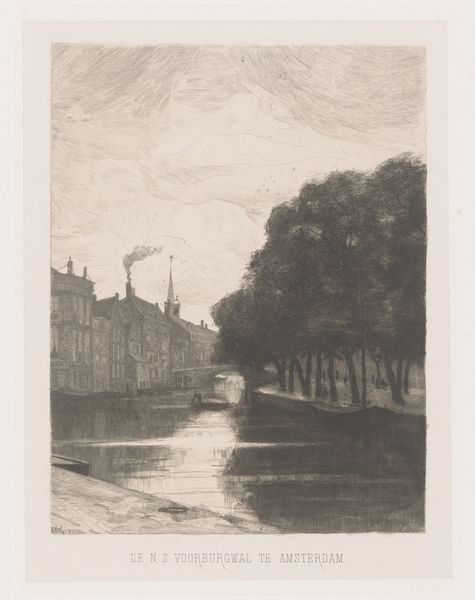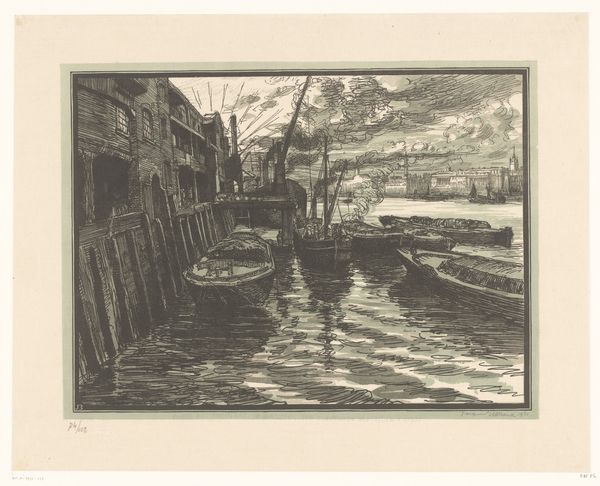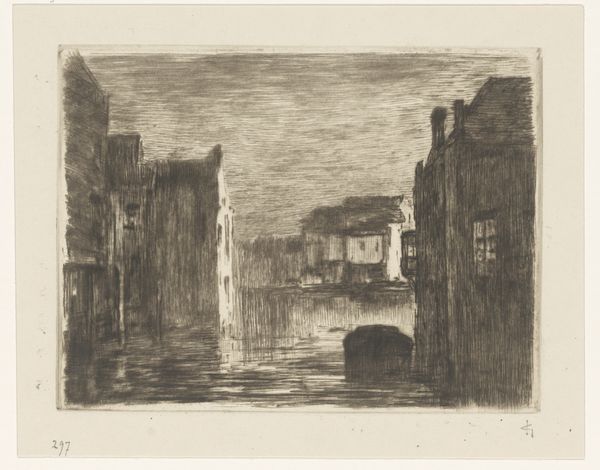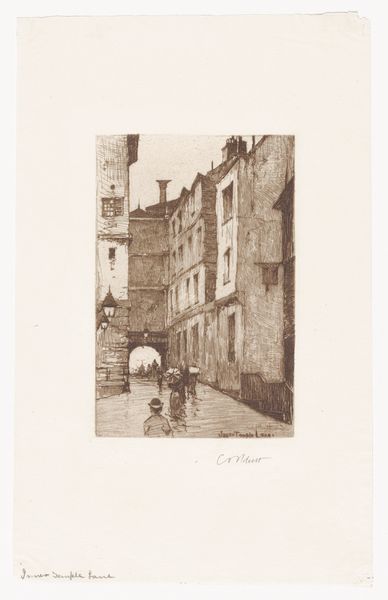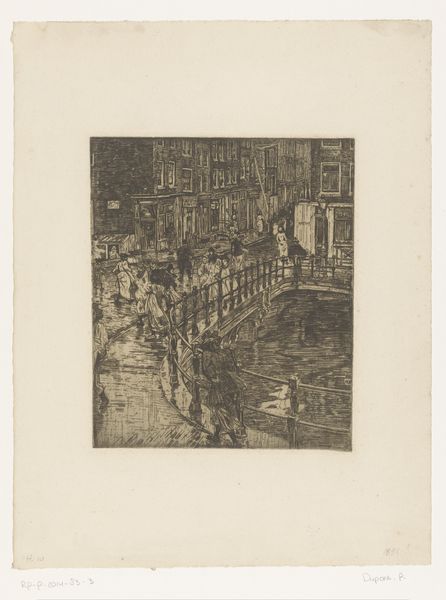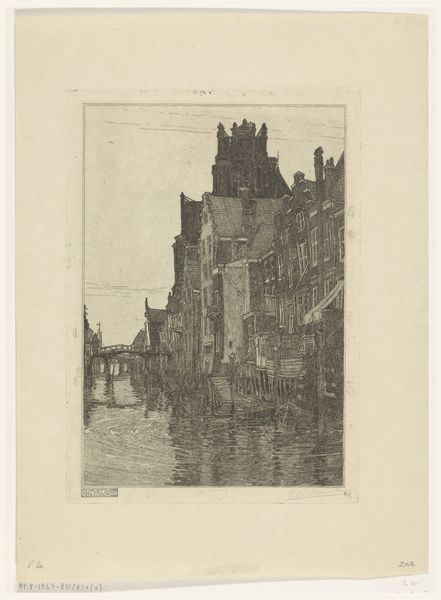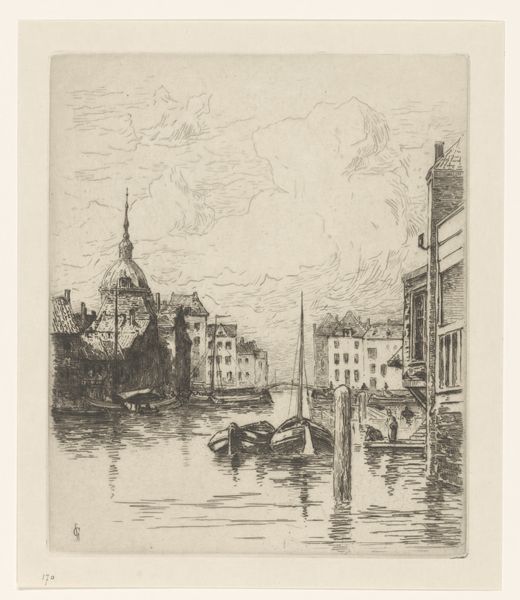
print, etching
# print
#
etching
#
etching
#
cityscape
#
realism
Dimensions: height 247 mm, width 201 mm
Copyright: Rijks Museum: Open Domain
Curator: The gray palette makes this cityscape initially feel so somber. The reflections on the cobblestones suggest a recently passed storm. Editor: This etching, "Stadsgezicht bij regen," or "Cityscape in the Rain," was crafted by Egbert Rubertus Derk Schaap around the 1870s. There's such a bleak beauty in its portrayal of the urban environment. We have to understand urbanization, and the lives it encompassed, in the context of industrial modernity and growing inequality in that era. Curator: Absolutely. Looking closely, the detail is compelling. Note the almost stark rendering of the architecture and how the figures are carefully depicted with such simple, subtle lines. Editor: It is more than lines. The way in which the lines themselves were bitten into the metal plate, the amount of time spent in the acid bath; all contributes to the final tonality, which so readily presents this particular urban experience. And don't forget, printmaking was a means of reproducing images and making them more accessible to a wider audience. Consider its impact within that framework. Curator: A point well-taken. This piece may reflect Schaap’s worldview. Were the circumstances of his time as gloomy as presented here? And the social strata, from the factory with billowing smoke to those struggling on a rain slicked street with their dog, makes me wonder how to read this picture of his context in time? Editor: This echoes artistic strategies favored by realists and naturalists like Courbet and Zola in their focus on working class people and subjects hitherto considered improper subjects for "High Art". These choices became increasingly linked with socialist and other leftist political agendas during that era, challenging hegemonic taste structures. Curator: The way it captures a moment of urban life is quite special. The lone figure walking his dog adds an interesting note to the piece as they travel towards or away from something outside our immediate vision, doesn’t it? A social allegory, perhaps? Editor: This prompts us to reconsider notions of value, taste, and class during the rapid socio-political transformations within this crucial epoch, and invites discourse about marginalized individuals. Curator: Seeing it framed through this lens offers a deeper engagement with art. It shows the work beyond face value; giving the etching a fresh new meaning. Editor: And hopefully, a materialist perspective, one based on how, by whom, and from what materials objects are made helps us connect the artwork more to lived experience.
Comments
No comments
Be the first to comment and join the conversation on the ultimate creative platform.

